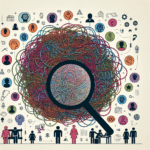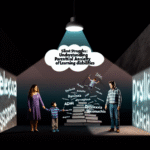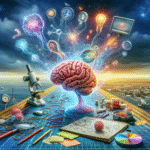
Spotting the Symptoms: How to Identify Early Signs of Anxiety Disorders for a Brighter Future
Introduction
Anxiety disorders are among the most prevalent mental health conditions today, impacting millions and often going unchecked due to lack of awareness. The journey to understanding and managing anxiety begins with early identification. In this comprehensive guide, "Spotting the Symptoms: How to Identify Early Signs of Anxiety Disorders," we’ll explore the nuances of anxiety, discuss key indicators, and offer actionable insights to empower you or a loved one to take proactive steps toward wellness.
Understanding Anxiety Disorders
What Are Anxiety Disorders?
Anxiety disorders encompass a range of conditions that lead to excessive fear or worry. They can manifest differently, affecting individuals in varying ways. These disorders include Generalized Anxiety Disorder (GAD), Panic Disorder, Social Anxiety Disorder, and specific phobias, among others.
Why Spotting the Symptoms Matters
Early intervention can significantly enhance quality of life, allowing individuals to navigate challenges more effectively. By understanding the early signs, you can create an environment that fosters openness and support, ultimately reducing the stigma associated with mental health.
Identifying Early Signs of Anxiety Disorders
Emotional Indicators
- Persistent Worry: An individual may experience incessant thoughts about everyday situations, often magnifying their significance.
- Irritability: Increased sensitivity to stress, leading to anger or frustration, is common among those grappling with anxiety.
Physical Symptoms
- Fatigue: Constantly feeling drained despite adequate rest may signal underlying anxiety.
- Muscle Tension: Unexplained tightness, especially in the neck and shoulders, can be a reaction to anxious thoughts.
Case Study: Lisa’s Experience
Lisa, a university student, overlooked her constant fatigue and muscle tension as typical symptoms of student life. However, after recognizing her increased irritability and persistent worry about grades, she sought help. With early intervention, Lisa learned coping mechanisms, allowing her to excel academically while managing her anxiety.
Behavioral Changes
- Avoidance: Steering clear of certain situations or conversations is a strong indicator of anxiety.
- Disrupted Routine: A noticeable departure from daily habits or interests can signal underlying distress.
Utilizing Tools to Spot Symptoms
Self-Assessment Questionnaires
Implementing structured assessments can help individuals understand their anxiety levels better. Tools such as the Generalized Anxiety Disorder 7-item (GAD-7) scale allow for self-evaluation and encourage honest reflection.
Family and Peer Observations
Often, family and friends may observe signs that an individual misses. Open conversations can foster an environment where concerns and observations are shared constructively.
Table 1: Key Symptoms and Self-Assessment Tools
| Symptom | Self-Assessment Tool | Description |
|---|---|---|
| Persistent Worry | GAD-7 Questionnaire | Rate your anxiety on a scale of 0-3 |
| Irritability | Family Feedback | Ask loved ones for their observations |
| Fatigue | Journaling | Document your feelings and energy levels daily |
The Psychology Behind Anxiety Disorders
Understanding Triggers
Identifying specific triggers is crucial in understanding anxiety. These triggers can be situational, like public speaking, or cognitive, such as perfectionist tendencies.
The Role of Neurotransmitters
Chemical imbalances, particularly in serotonin and dopamine levels, can contribute to the development of anxiety disorders. Early identification allows for therapeutic approaches, including cognitive behavioral therapy (CBT) or medication if needed.
Coping Strategies and Solutions
Mindfulness Techniques
- Deep Breathing: Simple breathing exercises can mitigate immediate feelings of anxiety.
- Meditation: Regular meditation practices can help ground thoughts and emotions.
Case Study: Mark’s Mindfulness Journey
Mark, a young professional, realized his anxiety impacted his job performance. By incorporating mindfulness practices like deep breathing and meditation into his daily routine, he experienced a significant reduction in anxiety symptoms, enhancing both his focus and productivity.
Professional Help
Engaging with mental health professionals is crucial for those struggling to manage symptoms on their own. Therapies like CBT provide tools to challenge negative thought patterns while fostering resilience.
Conclusion: Take Action Now
Spotting the symptoms: How to identify early signs of anxiety disorders is not just about recognition; it is about initiating action. Acknowledging these signs paves the way for achieving mental wellness and enhancing life quality. If you or someone you know displays any of these symptoms, take the first step towards a brighter future—reach out for help.
FAQs
1. What are the most common anxiety disorders?
Common anxiety disorders include Generalized Anxiety Disorder, Social Anxiety Disorder, Panic Disorder, and Phobias.
2. How can I help a loved one who may have anxiety?
Listen, offer support, encourage them to seek professional help, and create a safe environment for sharing feelings.
3. Are there natural remedies for anxiety?
Certain remedies, such as exercise, herbal supplements, and mindfulness practices, may help alleviate symptoms, but consulting a healthcare provider is essential.
4. How can I distinguish between normal stress and anxiety disorders?
Normal stress is often transient and tied to specific situations, while anxiety disorders exhibit persistent feelings of worry and fear affecting daily life.
5. What role does lifestyle play in managing anxiety?
A balanced lifestyle, including regular exercise, healthy eating, and sufficient sleep, plays a crucial role in managing anxiety symptoms.
By understanding and implementing these insights into spotting the symptoms: how to identify early signs of anxiety disorders, you lay the groundwork for a healthier, more empowered life. Embrace the journey, as the first step towards mental wellness often begins with awareness and support.

















